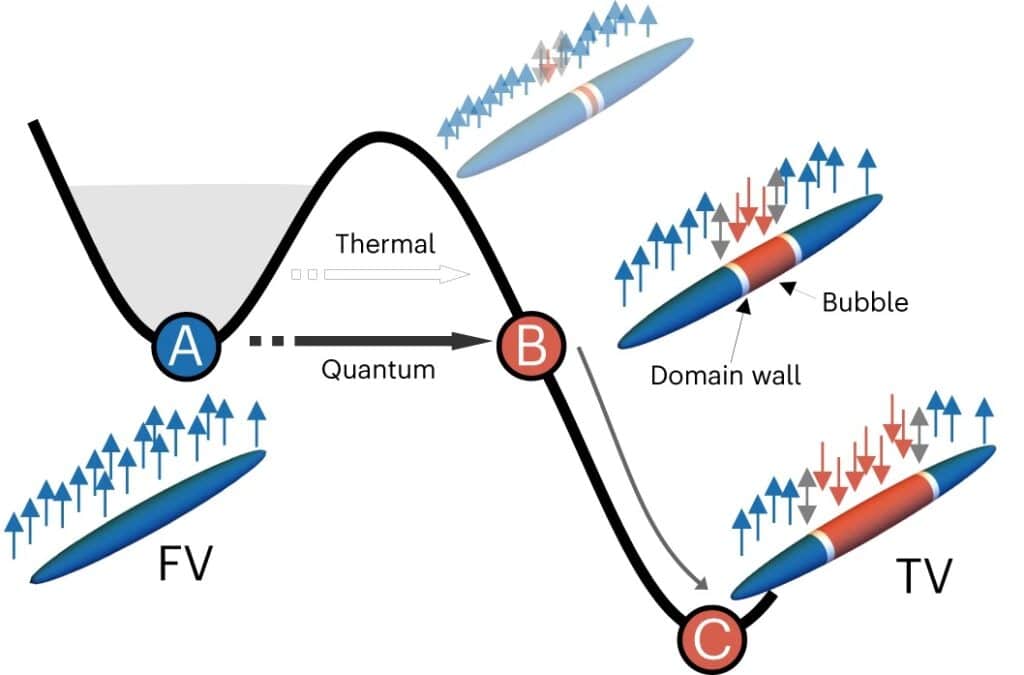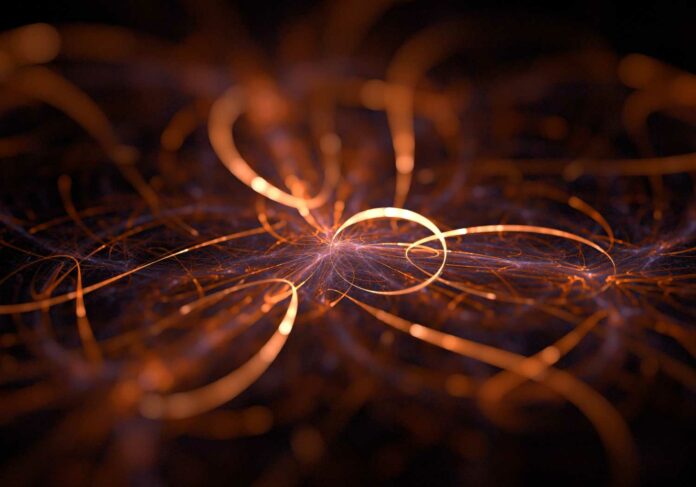Metastability arises from the finite lifetime of a state when a lower-energy configuration is possible but can only be reached by tunneling through an energy barrier. This phenomenon is observed in various natural situations, such as chemical processes and electron field ionization. In classical many-body systems, metastability naturally occurs in the presence of a first-order phase transition.
The application of metastability to quantum field theory and quantum many-body systems has garnered considerable interest in statistical physics, protein folding, and cosmology. In these contexts, it is anticipated that thermal and quantum fluctuations may initiate the transition from a metastable state (false vacuum) to the ground state (true vacuum) through the probabilistic nucleation of spatially localized bubbles. Despite this theoretical progress, the experimental validation of estimating the relaxation rate of the metastable field through bubble nucleation has been a longstanding challenge.
In quantum field theory, transforming a not-so-stable state into an actual stable state is called “false vacuum decay.” This process involves the creation of tiny localized bubbles. While existing theoretical work can predict the frequency of bubble formation, more experimental evidence must be provided.
An international research team, including scientists from Newcastle University, has observed these bubbles forming for the first time in carefully controlled atomic systems. This experimental observation provides valuable insights into the quantum field theory dynamics of false vacuum decay.

The experimental findings are substantiated by theoretical simulations and numerical models, affirming the quantum field origin of the decay and its thermal activation. This opens up possibilities for emulating out-of-equilibrium quantum field phenomena in atomic systems.
The experiment used a supercooled gas with a temperature of less than a microkelvin (one millionth of a degree) above absolute zero. At this extremely low temperature, bubbles were observed to emerge as the vacuum decayed.
Professor Ian Moss and Dr. Tom Billam from Newcastle University conclusively demonstrated that these bubbles result from thermally activated vacuum decay. This experimental work contributes to our understanding of quantum field dynamics and provides a platform for exploring quantum phenomena in controlled atomic systems.
Ian Moss, Professor of Theoretical Cosmology at Newcastle University’s School of Mathematics, Statistics, and Physics, said: “Vacuum decay is thought to play a central role in the creation of space, time, and matter in the Big Bang, but until now, there has been no experimental test. In particle physics, vacuum decay of the Higgs boson would alter the laws of physics, producing what has been described as the `ultimate ecological catastrophe.'”
Dr Tom Billam, Senior Lecturer in Applied Maths/Quantum, added: “Using the power of ultracold atom experiments to simulate analogs of quantum physics in other systems – in this case, the early universe itself – is a fascinating area of research at the moment.”
The research not only provides insights into the dynamics of quantum field phenomena but also opens up new avenues for understanding the early universe and ferromagnetic quantum phase transitions.
Journal Reference:
- Zenesini, A., Berti, A., Cominotti, R. et al. False vacuum decay via bubble formation in ferromagnetic superfluids. Nat. Phys. (2024). DOI: 10.1038/s41567-023-02345-4
